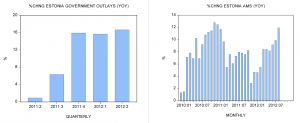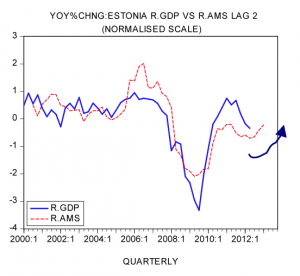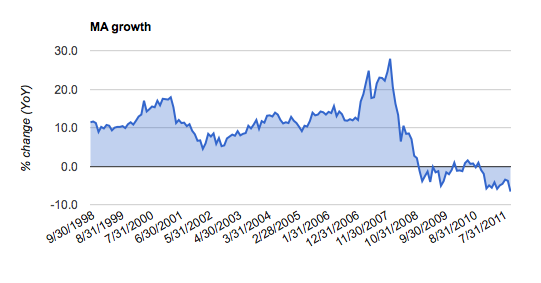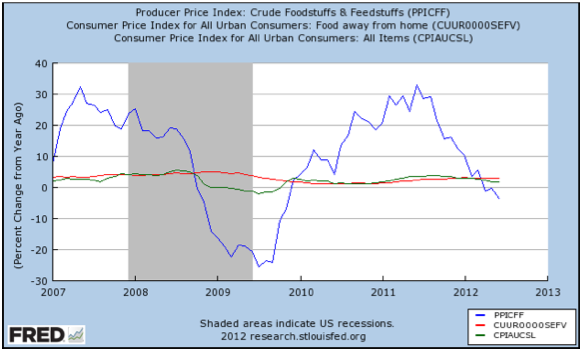Against the background of a severe economic crisis in the Euro-zone one is surprised to find a member of the Euro area that is actually showing good economic performance. This member is Estonia. In terms of so-called real gross domestic product (GDP) the average yearly rate of growth in Estonia stood at 8.4% in 2011 against overall Euro-zone performance of 1.5%. So far in 2012 the average yearly growth stood at plus 2.8% in Estonia versus minus 0.2% in the Euro-zone.
Also note that the unemployment rate in Estonia displays a visible decline – it fell to 5.9% in August from 7.6% in January. In contrast, the unemployment rate in the Euro-zone climbed to lofty levels in August. After closing at 10.8% in January the Euro-zone unemployment rate shot up to 11.4% in August.
A severe cleansing, i.e the removal of various non-productive activities, is a key factor behind the success story of Estonia. Between Q3 2009 and Q1 2011 the average yearly rate of growth of government outlays stood at minus 7.4%. In short, government outlays were cut sharply. Note that this purged various false activities that emerged on the back of previous loose government spending. Additionally, Estonia’s government debt as % of GDP is only 6% versus Germany’s 81% and Greece’s 165%.
Another important factor that revitalized the Estonian economy is a fall in money supply during the period May 2008 to November 2009, i.e. money supply declined for 19 months. Note that the average of the yearly rate of growth of our monetary measure (AMS) during this period stood at minus 7.9%. A fall in money supply arrested the transfer of real wealth from wealth generating activities to non-wealth generating activities. This amounts to the strengthening of wealth generators and a weakening of non-wealth generating activities. On account of a time lag the effect of this decline in money supply is still in the system, i.e. it continues to benefit economic fundamentals.
Since Q2 2011 the government has reversed its stance and embarked on massive spending. The average of the yearly rate of growth between Q2 2011 and Q2 2012 stood at a positive figure of 11%. (Contrast this with the minus 7.4% during Q3 2009 to Q1 2011). Furthermore, the yearly rate of growth of money supply has been displaying strong growth. The average of the yearly rate of growth between December 2009 and August 2012 stood at positive 8%. (Contrast this with the figure of minus 7.9% during May 2008 to November 2009).
Rather than persisting with the cleansing process the government and the central bank have chosen to reverse the stance thereby arresting the process of healing the economy. Temporarily the reversal of the stance is probably going to “work”. It will give rise to new bubble activities and will strengthen the old bubble activities. In terms of real GDP it is quite likely that we are going to see a visible strengthening ahead in its growth momentum. At some stage, however, the weakening of wealth generators is going to be felt and the Estonian economy is going to suffer on account of the reversal in its fiscal and monetary stance.
Summary and conclusions
The Estonian case shows that a policy that removes bubble activities lays the foundation for healthy economic growth. Any attempt to alter tighter fiscal and monetary policies brings back false non-productive activities and leads to economic impoverishment. It is not possible to generate something out of nothing. Any attempt to do so results in an economic disaster.









I wonder who leaned on them hard?
A good post.
When Estonia entered the European Union I was very depressed – as of all the countries of Eastern Europe, Estonia had come closest to following a free market policy in the post Soviet period.
I knew that E.U. regulations would be imposed and I feared that Estonia would be corrupted by EU subsidies.
A lot of bad things did happen – but this article shows that the spirit of freedom (of limiting government) is not dead in Estonia.